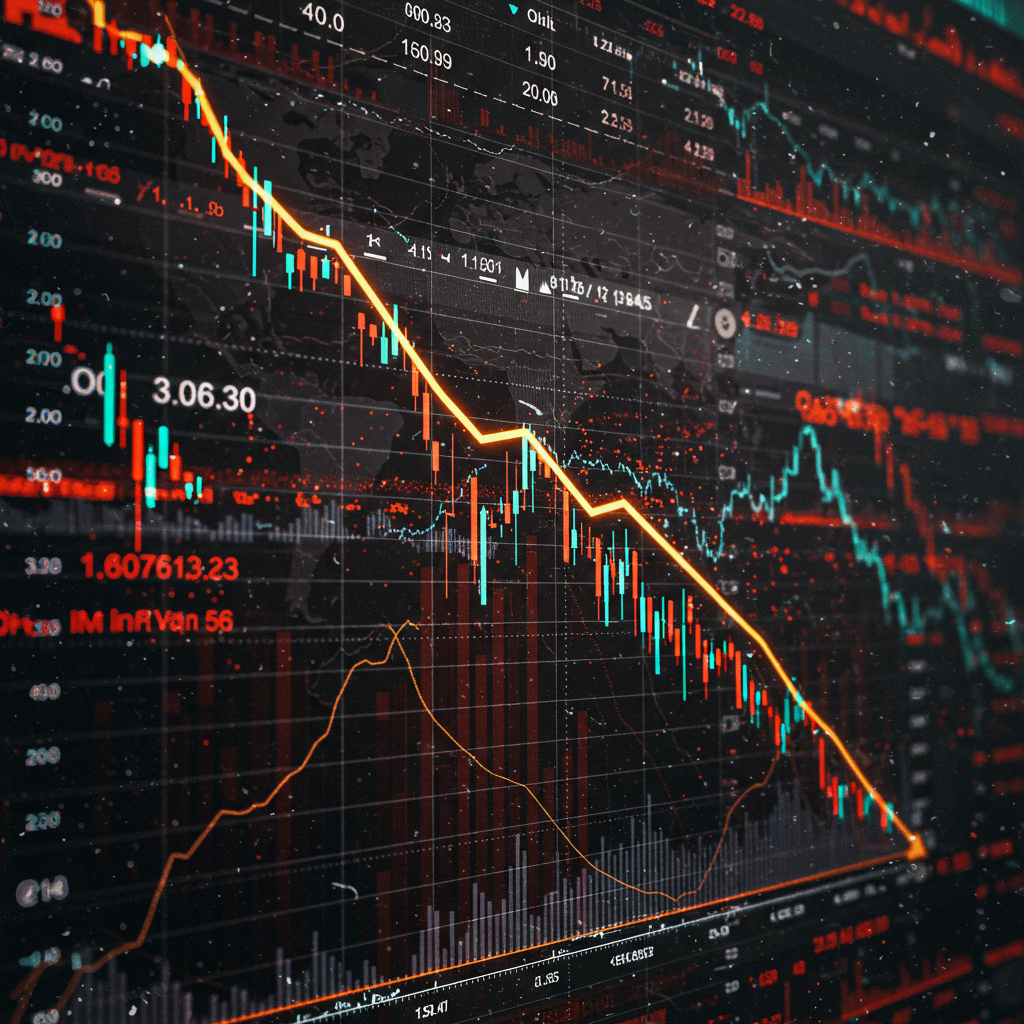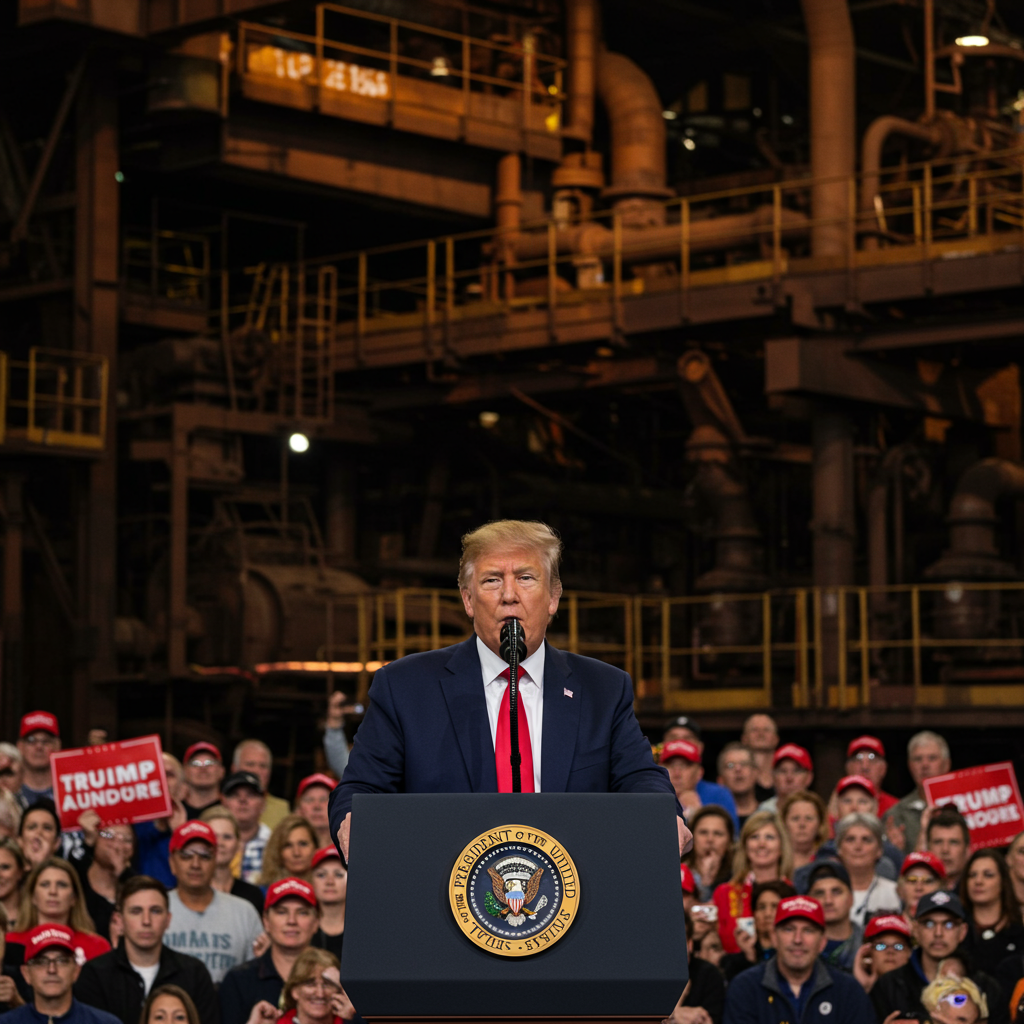Trump’s New tariffs: A High-Stakes Economic Gamble
Former President Donald Trump is once again deploying high tariffs, marking a significant shift in U.S. trade policy that previously rattled global markets and sparked widespread economic uncertainty. Just months after a previous wave caused financial markets to falter, consumer confidence to dip, and his own popularity to slide, Trump is initiating a new round of import taxes. He appears to be betting that this time, the outcome for the U.S. economy and his political standing will be dramatically different.
This aggressive strategy ties the global economy to Trump’s deeply held belief that imposing taxes on imports is the most direct path to boosting domestic factory jobs and driving robust U.S. economic growth. This perspective stands in stark contrast to the warnings from many economists who predict these very measures could fuel inflation and lead to an economic slowdown.
A Repeat Bet on Import Taxes
Trump’s conviction about the power of tariffs is clear. He recently told his Cabinet that past presidents who shied away from aggressive tariff use were simply “stupid.” Ever the pragmatist from his perspective, he argued that trying to negotiate complex trade deals with numerous countries is “too time-consuming.” His preferred method? Sending letters that simply list the new tariff rates.
This approach marks a notable change from his earlier public declarations. Previously, events like the “Liberation Day” announcement on April 2nd featured poster boards displaying tariff rates, a spectacle that analysts noted triggered a brief market meltdown. The letters, described by Trump as a “better way” and a “more powerful way,” despite sometimes featuring random capitalizations and formatting issues, communicate the raw numbers: “You’ll pay 25%, 35%. We have some of at 60, 70.”
Specifics of the New Tariff Wave
The current wave of tariffs is far-reaching. As of Monday, letters imposing import taxes ranging from 25% to 40% had been sent to 14 countries. This included a notable 40% tariff on imports from Laos and Myanmar. Adding to the economic pressure, Trump plans to impose 25% tariffs on Japan and South Korea, two major trading partners and crucial allies in navigating China’s economic influence.
These new tariffs are piled on top of existing duties, including 50% tariffs on steel and aluminum, 25% on autos, and separate import taxes targeting Canada, Mexico, and China. During a Cabinet meeting, Trump also announced an immediate order for a 50% tariff on copper, citing national security grounds under Section 232. Commerce Secretary Howard Lutnick confirmed this rate, expecting implementation by the end of July. Trump further indicated that pharmaceutical drugs could eventually face tariffs as high as 200%, though potentially with a grace period of a year or more for companies to adjust.
Departure from Traditional Trade Talks
Trump’s unilateral approach stands in stark opposition to the painstaking, often years-long detailed negotiation sessions that have characterized major international trade agreements for the past half-century. While leaders from the 14 targeted nations, including Japan, South Korea, Malaysia, Myanmar, Thailand, Cambodia, and South Africa, expressed hope for further negotiations before the higher rates take effect on August 1st, Trump dismissed the idea as “too complicated” to hold individual meetings. On social media, he firmly stated, “There has been no change to this date, and there will be no change. No extensions will be granted.”
Potential Outcomes and Market Reaction
This political and economic wager presents three distinct possibilities, each potentially reshaping international affairs and Trump’s future legacy. The tariffs could genuinely deliver growth as promised, proving skeptics wrong. Alternatively, Trump might backtrack before the August 1st deadline, a phenomenon some observers cynically label “Trump Always Chickens Out,” or TACO. The third potential outcome is that the tariffs inflict significant damage on the economy, negatively impacting both the U.S. communities that supported his return to office and the foreign nations facing financial disadvantages.
So far, financial markets have responded with relative calm. The S&P 500 stock index remained largely flat following a slight decline, suggesting that markets are either skeptical the tariffs will be fully implemented or anticipate compromises, according to analysts like Ben May at Oxford Economics. May forecasts that the tariffs are likely to slow U.S. household income growth, though not necessarily cause it to shrink outright. Economist Wendong Zhang of Cornell University points out that floating extremely high rates, even up to 100% in rhetoric, risks “normalizing” exceptionally large hikes like 25%, framing this as one of the “most aggressive and disruptive tariff moves in modern history.”
Critics Weigh In
Not everyone is viewing the situation with equanimity. Senator Ron Wyden (D-Ore.) sharply criticized Trump’s letters, describing them as extending a “tariff purgatory” that freezes the U.S. economy by creating vast uncertainty for CEOs, foreign leaders, and consumers alike. Wyden argued that the unpredictable “TACO negotiating tactic” diminishes Trump’s credibility and makes trading partners less willing to engage constructively. Desmond Lachman, a senior fellow at the American Enterprise Institute, views the erratic communication and seemingly random tariff rates as evidence of “nonstop chaos” and a clear absence of genuine policy process within the administration, suggesting they are “running this by the seat of their pants.”
The Economic Impact Under Scrutiny
Beyond market reactions, the broader economic implications are under debate. The administration argues that tariffs will help close U.S. trade imbalances, although the rationale for targeting nations with relatively little trade volume with America, such as Tunisia, remains unclear. A key justification provided by administration officials is that projected tariff revenues, potentially totaling trillions over the next decade, will help offset the revenue lost from the recent continuation and expansion of his 2017 tax cuts.
Supporting this claim, data from the Bipartisan Policy Center shows federal tariff revenues have already reached $98.2 billion this year, more than double the amount collected last year. Treasury Secretary Scott Bessent projected revenues could exceed $300 billion by the end of the year and even disputed the Congressional Budget Office’s estimate of $2.8 trillion over 10 years, calling it “probably low.”
Impact on Key Industries
The new tariff push is already sending specific ripples through key global industries.
Copper Tariffs Send Shockwaves
The announcement of a potential 50% tariff on copper imports has caused significant concern, particularly in Chile, the world’s largest copper producer and the primary supplier to the United States. The proposed rate is substantially higher than market expectations and sent shockwaves through the global copper industry. The U.S. imports about 700,000 metric tons of refined copper annually, with Chile accounting for a massive 500,000 tons – roughly 71% of that supply.
Chilean officials and executives from state-owned mining company Codelco, a major supplier, are actively engaged with U.S. authorities but note the situation is still developing, with no formal executive order yet issued. Experts like Ben Hoff at Societe Generale suggest the 50% tariff might be a negotiating tactic, highlighting the difficulty of replacing Chile’s vast supply. Uncertainties remain regarding potential country exemptions or whether the tariff applies only to refined metal or also semi-fabricated products. Despite the uncertainty, Chile affirmed its readiness to continue supplying the U.S.
Auto Tariffs Fuel Used Car Price Surge
Elsewhere, the 25% tariff on imported automobiles appears to be contributing to a surge in U.S. used vehicle prices. The Manheim Used Vehicle Value Index, an indicator previously linked to post-pandemic inflation spikes, is climbing again. The index rose 1.6% in June from May and surged 6.3% from a year earlier, marking the largest year-over-year increase since August 2022 and reaching its highest level since October 2023.
Jeremy Robb at Cox Automotive attributes this volatility directly to tariffs affecting new vehicle supply and sales. New vehicle purchases saw a jump in early spring as consumers tried to get ahead of anticipated tariff-driven price hikes, followed by substantial drops in new sales in May and June. Additionally, a downward trend in the supply of vehicles returning to the used market after leases end is expected to “fairly supportive of higher values” moving forward. The Manheim index’s recent rise has garnered attention from economists and Fed officials, recalling its role as an early predictor of inflation during the pandemic recovery, though current sentiment among some, like Fed Governor Christopher Waller, suggests less worry about sustained inflation and more concern about demand impact from tariffs.
Diplomacy vs. Deadline
Despite the Aug 1 deadline looming, the governments of targeted nations like Japan, South Korea, Malaysia, Myanmar, Thailand, Cambodia, and South Africa continue to express hope for negotiations. However, Trump’s stance remains firm as expressed on social media – the tariffs will be charged as scheduled, and no extensions will be granted. This sets up a tense few weeks ahead for global trade relations.
Frequently Asked Questions
How does Trump’s new tariff strategy differ from his past approach?
Unlike his previous method of public announcements and poster displays, Trump is now primarily using formal letters to notify countries of new tariff rates. While he still publicly discusses high rates, the official notifications are being sent via letter, which he describes as a more direct and powerful method, bypassing traditional, lengthy trade negotiations.
What specific industries and countries are being targeted by the new tariffs?
The new tariffs target a wide range of goods and countries. As of Monday, 14 nations faced 25% to 40% tariffs, including Laos and Myanmar. Key allies Japan and South Korea are slated for 25% tariffs. Separately, Trump announced a 50% tariff on copper and threatened potential 200% tariffs on pharmaceuticals. These are in addition to existing tariffs on steel, aluminum, autos, Canada, Mexico, and China.
What are the potential economic outcomes economists are predicting from these tariffs?
Many economists predict the tariffs could lead to increased inflation and an overall slowdown in economic growth within the U.S. However, Trump and his administration argue that the tariffs will boost factory jobs and generate significant revenue to offset tax cuts, predicting stronger growth. Market reactions so far are mixed, showing some skepticism about full implementation, while experts warn of potential slowdowns in household income growth and the “normalization” of exceptionally high tariff rates.
Conclusion
Donald Trump’s decision to implement a new wave of aggressive tariffs is a bold and high-stakes move that reintroduces significant uncertainty into the global economy. Betting that import taxes will spur U.S. growth despite warnings from economists, he is bypassing traditional trade talks and imposing duties across numerous industries and countries. The coming weeks, particularly leading up to the August 1st deadline, will reveal whether this gamble pays off, leading to economic expansion, or if it repeats the market volatility and economic disruption seen during his previous term. The world is watching to see if this time is truly different.
Word Count Check: 1146


